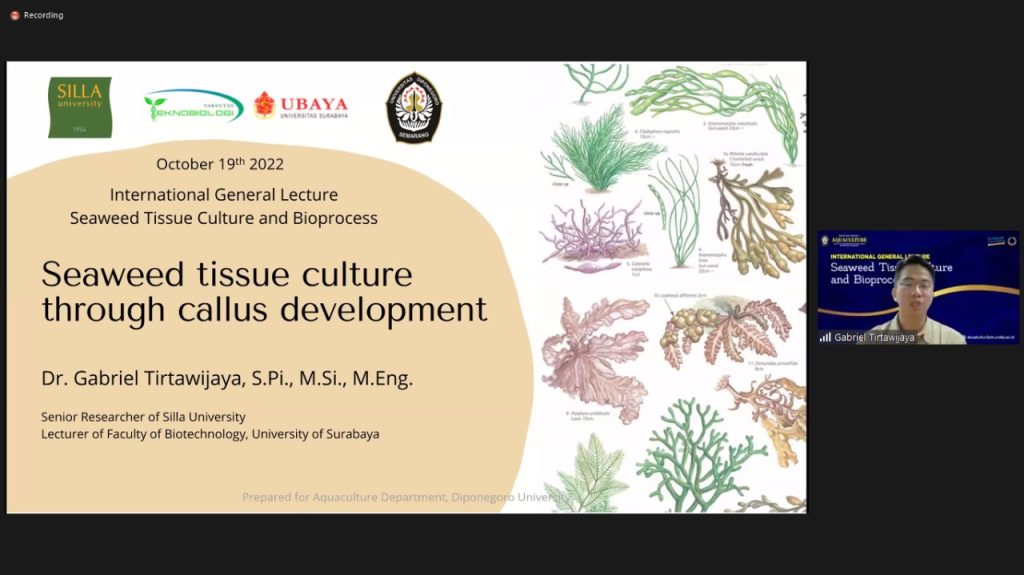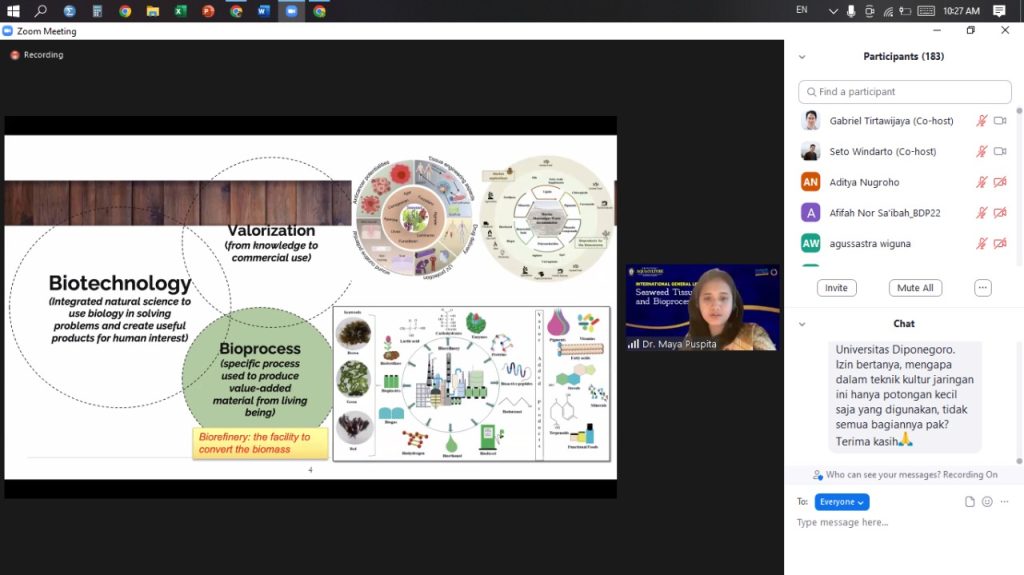Aquaculture, Semarang – Seaweed is one of the commodities with promising prospects, but the availability of high-quality seeds and their utilization still need to be a concern. Starting from this, the Department of Aquaculture, Faculty of Fisheries and Marine Sciences, Diponegoro University, held an International General Lecture titled “Seaweed Tissue Culture and Bioprocess.”
The speakers for this activity are experts in tissue culture and bioprocessing. The first speaker is Dr. Gabriel Tirtawijaya, a researcher at Silla University, Korea and still an active lecturer at the University of Surabaya. He is an expert in the field of seaweed tissue culture. The second speaker is Dr. Maya Saptiani, an alumnus of FPIK Diponegoro University. She is currently the head of research in the seaweed industry and is an expert in the field of bioprocesses.
This event was attended by more than 170 online participants, both from the UNDIP academic community and from other institutions. The event started with the opening of the MC, Dicky Harwanto, Ph.D., followed by remarks from Vice Dean 1 for Academics, Agus Trianto, Ph.D.
Dr. Gabriel delivered the first presentation; he explained seaweed and its classification, the tissue culture process, its advantages and disadvantages and the latest research on seaweed tissue culture. In conducting tissue culture, there are advantages, including new plantlets that can grow fast, free of disease and not depend on the season, while the disadvantage is that it requires a lot of money and effort. Factors that influence tissue culture are genetics, media, environment, and sources.
Dr. Maya delivered the second presentation; she explained biotechnology and seaweed bioprocess. Seaweed can be used for several things, such as natural food, food additives, animal feed, pharma-nutraceutical, and bio-stimulant. Seaweed extraction can be carried out by several methods, including acid and alkaline hydrolysis, water, conventional solvent extraction, and green extraction. In carrying out biotechnology and bioprocessing, the objectives of these activities must be determined without forgetting economic factors.
This activity runs interactively, and many participants ask questions and discuss with the speakers. Hopefully, this activity can broaden the participants’ knowledge of tissue culture and seaweed bioprocesses to improve science and the Indonesian economy.




Recent Comments